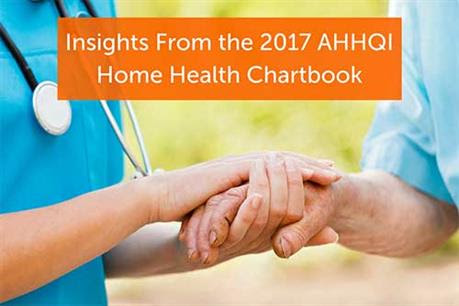In early March, the Alliance for Home Health Quality and Innovation (AHHQI) released a new version of the Home Health Chartbook, and the overall message is clear: Home health care is a significant contributor to the U.S. economy.
According to the new report, which was prepared for AHHQI by Avalere Health, the number of Medicare-certified free standing home health agencies has more than doubled since 1994 (from 4,613 to 10,852) while the number of home health episodes has only risen by about 1 million in the same period. Home health care created 1.8 million jobs in 2014, and that number is only increasing. The cumulative effect of those jobs is an estimated $35 billion in wages, and an overall contribution to the labor income of nearly $58 billion. Home health expenditures topped $36 billion. However, these numbers only tell part of the story, and by looking at some of the more specific trends in home health, your agency can better refine its marketing, training, and operational policies.
Who’s Receiving Home Health Care?
While there is no “typical” home health patient, there are some clear trends among those receiving care. In fact, if you were to summarize the average Medicare-eligible home health user, you could describe that person as female, white, and living in an urban area.
More specifically, 61.5 percent of home health users are female, and 38.5 percent are male, as opposed to all Medicare beneficiaries, which are split about 55/45. Seventy-nine percent of home health users are white; 14.1 percent are black and 2.4 percent are Asian. The remainder of users are of other races, including American Indian or mixed race. The clear majority of home health users — 90 percent — live in urban counties, which is fairly consistent with Medicare beneficiaries overall. However, the large concentration of urban home health users supports the contention of many industry groups that rural and remote areas are under-served.
In terms of income distribution, there isn’t much difference between those earning less than $25,000 per year and those earning more. Those with incomes of less than $25,000 per year are slightly more likely to use both home health and skilled nursing services than those with higher incomes. There is a greater difference, though, among those with multiple conditions using services. More than half of all home health users have five or more chronic conditions, as opposed to only about 25 percent of all Medicare beneficiaries. Only about 15 percent of beneficiaries who have two or fewer chronic conditions use home health services.
Geographic distribution of home health users actually falls as one might expect. The highest number of Medicare-eligible home health users can be found in Florida (329,065) and the lowest number in Wyoming (3,865) followed by North Dakota (4,070). Other states with high numbers of home health users include California, Texas, Illinois, Pennsylvania, and Michigan.
The Effect of Home Health Care
One thing that the Home Health Chartbook brings into sharp focus is that home health care works.
For starters, home health users have significantly lower hospital readmission rates than those who have been discharged to other post-acute settings. For example, when looking at patients who received a major joint replacement, as of 2015, 3.6 percent of home health patients were readmitted to the hospital post-discharge, as opposed to 6.9 percent for skilled nursing facility patients and 7.8 percent for inpatient rehabilitation facilities. These numbers represent a decrease since 2009.
On all other major quality measures, home health saw significant gains between 2009 and 2015 as well. Among the measures that improved include:
- Treated patient’s pain (97 percent to 99 percent)
- Checked falling risk (95 percent to 99 percent)
- Taught patients and families about their medications (89 percent to 96 percent)
- Began care in a timely manner (90 percent to 92 percent)
- Improved bathing (65 to 71 percent)
- Improved breathing (63 to 69 percent)
- Improved walking (56 percent to 66 percent)
- Improved bed transfers (54 percent to 62 percent)
At the same time, overall hospital readmissions dropped from 27 percent to 16 percent.
Making Sense of It All
The Home Heath Chartbook is full of data that home health agencies can use. Consider charting your own performance against the national averages to identify areas of improvement. Keep close track of patient progress and data in your home health software to better identify those patients who may need extra education or support to improve.
From a marketing standpoint, the insights gained from the Chartbook can help your agency reach out to under-served patients and more effectively market your services to those who may need them the most. Above all, though, the report should serve as evidence that the work you are doing is worthwhile, and making a difference in the lives of those you serve.
To learn more about how Complia Health’s array of services can help your agency grow and thrive, check out some of our resources here.




